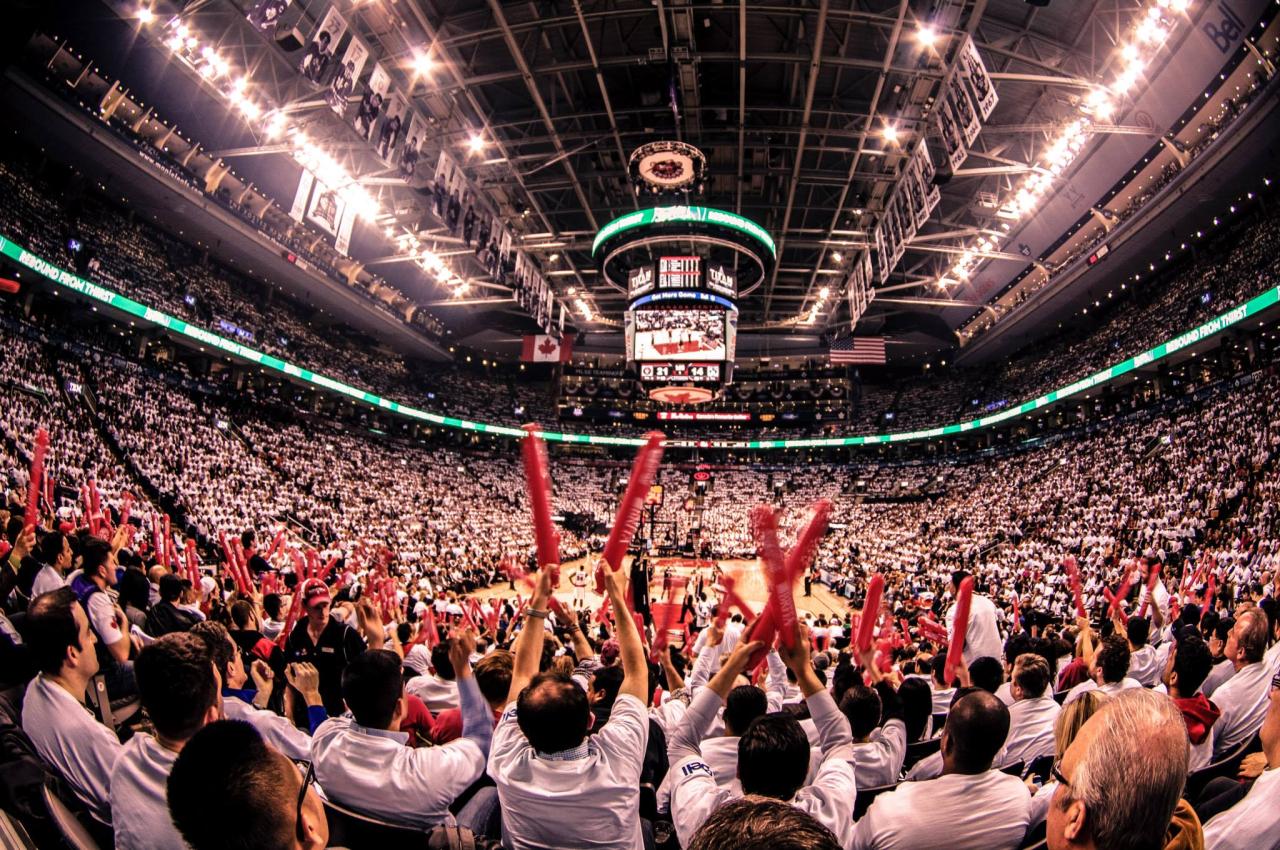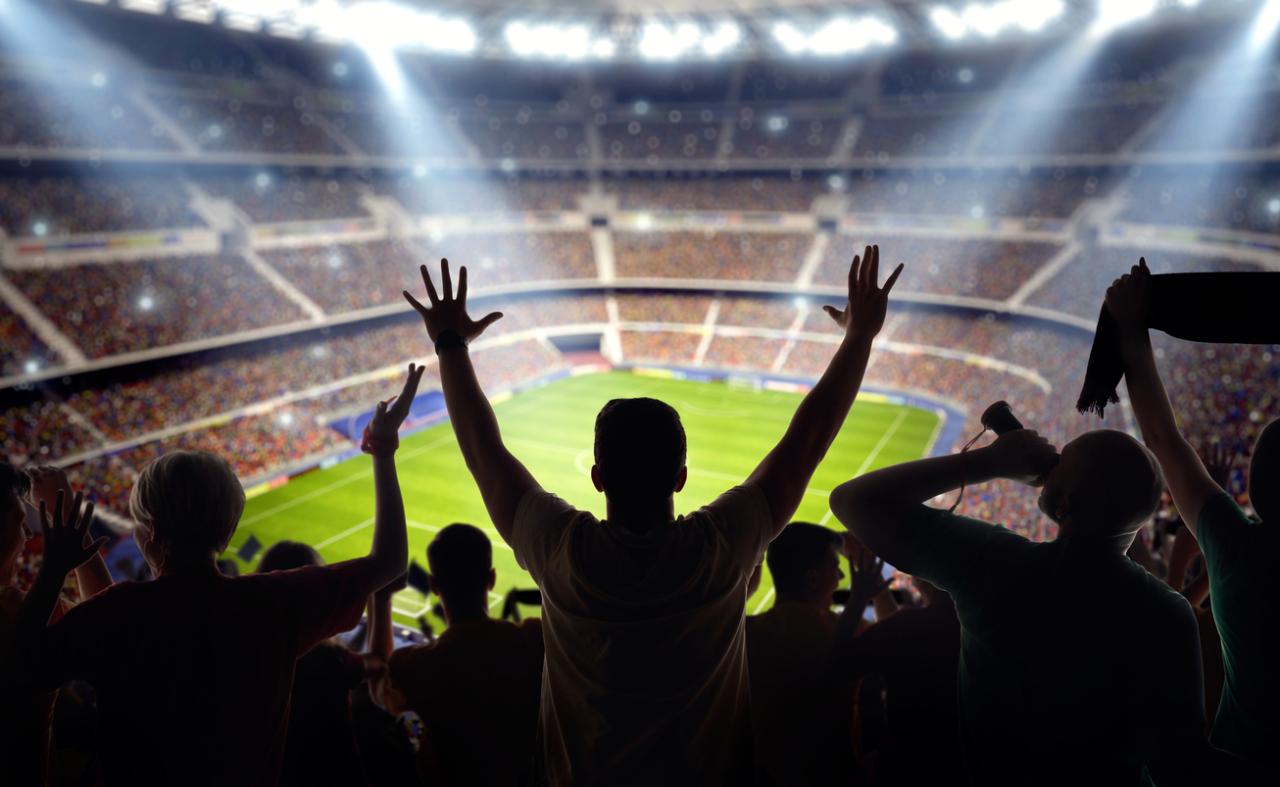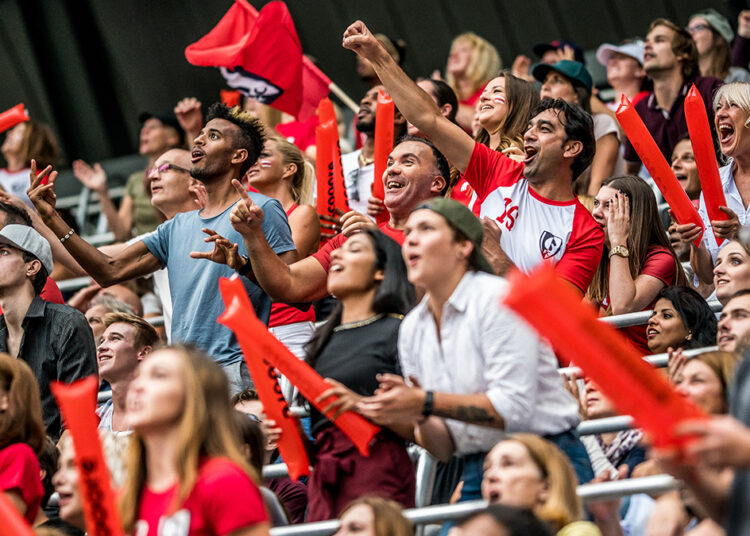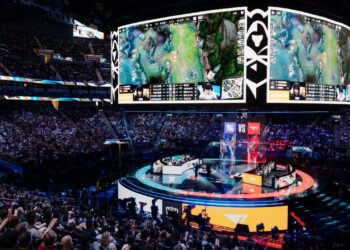Sports have an uncanny ability to ignite passions, create communities, and, perhaps most notably, spark intense rivalries. These aren’t just games; they’re epic sagas playing out on fields, courts, and tracks, fueled by history, geography, and often, a deep-seated desire for bragging rights. For many, the thrill of sports isn’t just about the wins, but about the unique emotional charge that comes with rooting against a hated foe. This comprehensive look delves into the very essence of these rivalries, exploring their origins, evolution, and the profound impact they have on both fans and the athletes themselves.
The Genesis of Great Rivalries

The roots of a fierce sports rivalry are often complex, interwoven with various factors that transcend mere athletic competition. Understanding these origins is key to appreciating the depth of the animosity and the enduring nature of these matchups.
A. Geographical Proximity
One of the most common catalysts for a rivalry is geographical closeness. When two teams are situated in the same city, state, or even neighboring regions, a natural sense of competition emerges. Fans share the same commutes, frequent the same establishments, and inevitably, their lives intersect. This creates a fertile ground for competitive banter and a desire to prove superiority over their immediate neighbors. Think of the crosstown clashes where families are literally divided by their allegiances. The proximity makes the rivalry personal, turning ordinary encounters into opportunities to discuss – or argue about – the latest game.
B. Historical Significance
Some rivalries are forged in the crucible of history, shaped by decades of memorable games, controversial calls, and iconic moments. These rivalries often have a rich tapestry of narratives that are passed down through generations of fans. A key playoff game from 30 years ago can still fuel the fire today, acting as a touchstone for discussions and a constant reminder of past triumphs or defeats. The weight of history adds a layer of gravitas, making each new encounter a continuation of an ongoing saga. These historical narratives become part of the collective memory of the fan base, shaping their identity and their perception of their rivals.
C. Championship Implications
When two teams frequently contend for the same championships or consistently meet in the playoffs, a rivalry is almost guaranteed to form. The stakes are incredibly high, and every victory over the adversary feels twice as sweet, while every loss is doubly bitter. These high-pressure encounters amplify the emotions, creating a heightened sense of drama and importance around each game. The battle for supremacy, year after year, solidifies the notion that these two teams are destined to clash, and only one can emerge victorious. This constant struggle for the top spot intensifies the animosity and makes every matchup a must-watch event.
D. Contrasting Philosophies or Styles
Sometimes, a rivalry emerges not just from competition, but from a fundamental difference in playing style or team philosophy. One team might be known for its aggressive offense, while the other prides itself on impenetrable defense. These contrasting approaches create compelling on-field matchups and can also reflect deeper cultural differences between the fan bases. The clash of styles isn’t just about who wins, but about which approach to the game is superior. This ideological component can add another layer of depth to the rivalry, making it more than just a contest of physical prowess.
E. Key Player or Coaching Personalities
Individual personalities, whether players or coaches, can sometimes be the spark that ignites or intensifies a rivalry. Charismatic figures who are not afraid to engage in verbal sparring or display their competitive fire can elevate a matchup from routine to must-see television. Their personal battles within the larger team context often become focal points of the rivalry, drawing additional attention and fan engagement. A specific player’s dominance over a rival, or a coach’s consistent ability to get under the skin of the opposition, can define an era of the rivalry and leave a lasting impression.
The Anatomy of a Heated Rivalry Matchup

What sets a rivalry game apart from any other regular season contest? It’s a confluence of factors that elevate the atmosphere, intensify the competition, and amplify the emotional experience for everyone involved.
A. Unrivaled Fan Passion
The energy in the stadium during a rivalry game is palpable. Chants are louder, cheers are more fervent, and boos are more thunderous. Fans arrive hours early, decked out in their team’s colors, eager to express their loyalty and their disdain for the opposition. The collective roar of the crowd becomes a weapon, attempting to intimidate the opposing team and spur their own players to greater heights. The atmosphere itself becomes part of the spectacle, a vibrant display of collective emotion and unwavering support.
B. Elevated Stakes and Intensity
While every game counts, a rivalry game often feels like a playoff match, regardless of its position in the season. Players bring an extra level of intensity, knowing that bragging rights, and often a boost in the standings, are on the line. The hits are harder, the passes are crisper, and every possession feels critical. The competitive fire is visibly burning brighter, leading to more aggressive play and, sometimes, more emotional outbursts.
C. Unpredictable Outcomes
The beauty of a true rivalry is that past records often go out the window. Underdogs can pull off stunning upsets, and favored teams can falter under the pressure. The emotional weight of the game can level the playing field, making every encounter a toss-up and adding to the dramatic tension. This unpredictability keeps fans on the edge of their seats until the very last second.
D. Narrative Storylines
Rivalry games are rich with storylines. A star player returning from injury, a coach facing his former team, or a grudge match after a controversial previous encounter – these narratives add layers of intrigue and personal drama to the athletic contest. The media thrives on these angles, building anticipation and providing talking points for days leading up to and following the game.
Iconic Rivalries Across the Sporting Landscape
From the gridiron to the hardwood, the pitch to the ice, the world of sports is replete with legendary rivalries that have captivated generations. These examples illustrate the diverse origins and enduring power of these intense matchups.
A. National Football League (NFL)
- Green Bay Packers vs. Chicago Bears: This is arguably the oldest and one of the most storied rivalries in NFL history, dating back to 1921. Geographical proximity, numerous championship implications, and a long history of legendary players and coaches have fueled this enduring animosity. The bitter cold of Lambeau Field or Soldier Field often adds another layer of grit to these encounters. The rivalry transcends eras, with each generation of fans inheriting the deep-seated dislike for the opposing side.
- Dallas Cowboys vs. Washington Commanders: While perhaps not as geographically close as some, this rivalry is built on historical significance, consistent playoff battles, and the sheer magnitude of both franchises. In the 1970s and 80s, these teams frequently battled for NFC East supremacy, leading to legendary games and iconic moments that solidified their animosity. The “America’s Team” moniker for the Cowboys often serves to further antagonize Washington fans.
B. National Basketball Association (NBA)
- Boston Celtics vs. Los Angeles Lakers: This is a quintessential rivalry, representing the clash of East Coast versus West Coast, and two of the most successful franchises in NBA history. Their numerous meetings in the NBA Finals throughout the 1960s, 1980s, and 2000s, featuring iconic players like Bill Russell, Magic Johnson, Larry Bird, Kobe Bryant, and Paul Pierce, have cemented their status as eternal adversaries. The “green versus purple and gold” represents a deep cultural and sporting divide.
- New York Knicks vs. Miami Heat: While not as historically dominant in terms of championships, the Knicks-Heat rivalry of the 1990s was legendary for its physicality, heated exchanges, and intense playoff series. Pat Riley, coaching both teams at different times, added another layer of personal drama to this already fiery matchup. The games were often low-scoring, defensive battles where every possession was fiercely contested.
C. Major League Baseball (MLB)
- Boston Red Sox vs. New York Yankees: Arguably the most famous rivalry in North American sports, the “Bosox vs. Bronx Bombers” transcends baseball. It’s a clash of cultures, a battle for regional pride, and a saga steeped in a 100-plus year history of triumphs, heartbreaks, and curses. The “Curse of the Bambino” and iconic moments like Aaron Boone’s walk-off home run in 2003 only added to the legend. Every game between these two feels like a playoff game.
- Los Angeles Dodgers vs. San Francisco Giants: This rivalry, a carryover from their days in New York (Brooklyn Dodgers vs. New York Giants), is one of the oldest and most geographically significant in baseball. The move to California in 1958 simply relocated the intense animosity. Their battles for National League West supremacy are often decided by the slimmest of margins, fueling the perennial hatred.
D. National Hockey League (NHL)
- Montreal Canadiens vs. Toronto Maple Leafs: A classic “Original Six” rivalry, this is a battle between two of the most storied franchises in NHL history, representing Canada’s two largest cities. Their numerous playoff encounters, coupled with long periods of dominance by both teams, have created a deep-seated animosity among their fan bases. The “Habs” vs. “Leafs” is more than just a hockey game; it’s a cultural touchstone.
- Boston Bruins vs. Montreal Canadiens: Another fierce “Original Six” rivalry, this one is driven by geographical proximity and numerous intense playoff series throughout the decades. The physical nature of hockey often amplifies the animosity between these two teams and their passionate fan bases. The “B’s” and “Habs” have a long history of bad blood and memorable brawls.
E. International Football (Soccer)
- El Clásico (Real Madrid vs. FC Barcelona): This is more than just a football match; it’s a cultural, political, and historical clash representing the long-standing rivalry between the Spanish capital and Catalonia. The quality of play is always exceptional, featuring some of the world’s greatest players, but the underlying tension and passionate support make it a truly unique spectacle. The rivalry encompasses deep-seated regional identities.
- The Old Firm Derby (Celtic vs. Rangers): This Glasgow rivalry is one of the most volatile and deeply rooted in the world, with sectarian, political, and social divisions adding layers to the sporting animosity. The religious divide (Catholic vs. Protestant) elevates the stakes far beyond the football pitch, making it a powerful and often intense display of local identity.
- Superclásico (Boca Juniors vs. River Plate): Argentina’s iconic derby between two Buenos Aires giants is renowned for its incredible atmosphere, passionate fans, and intense displays of emotion. The sheer volume of noise and the elaborate pre-game displays create an electrifying environment that few other sporting events can match. It’s a microcosm of Argentine passion for football.
The Impact of Rivalries on Athletes and Coaches
While fans revel in the drama, rivalries exert a unique pressure and influence on the individuals within the teams.
A. Enhanced Performance
The heightened stakes of a rivalry game often bring out the best in athletes. The adrenaline is pumping, focus is sharpened, and players push themselves to new limits. The desire to defeat a hated opponent can unlock an extra gear, leading to standout performances and memorable plays.
B. Mental and Emotional Toll
Conversely, the constant pressure and intense scrutiny surrounding rivalry games can take a significant mental and emotional toll. The weight of expectations, the fear of failure against a rival, and the relentless media attention can be exhausting. Losses to rivals can sting more deeply and linger longer.
C. Strategic Adjustments
Coaches often approach rivalry games with a different strategic mindset. They might employ unique game plans, utilize specific matchups, or make personnel changes to gain an edge. The in-game adjustments and tactical battles become even more critical when facing a familiar foe.
D. Defining Legacies
For many athletes and coaches, their performance in rivalry games can define their legacy. Delivering in the biggest moments against the most hated opponents is often what fans remember most and what contributes to their iconic status within a franchise’s history.
The Future of Sports Rivalries
As sports evolve, so too do rivalries. New teams emerge, dynasties rise and fall, and the landscape of professional athletics is constantly shifting.
A. Emerging Rivalries
The advent of new leagues, expansion teams, and shifts in competitive balance means that new rivalries are always on the horizon. A period of consistent competitive matchups, or the emergence of charismatic new stars, can quickly ignite a new animosity.
B. Global Expansion
With sports becoming increasingly globalized, the potential for international rivalries to transcend national borders is growing. Tournaments and international competitions bring together teams and fan bases from different cultures, potentially forging new and exciting competitive relationships.
C. Maintaining Historical Significance
For established rivalries, the challenge lies in maintaining their historical significance while adapting to modern sports. The narratives must be continuously refreshed by new generations of players and new memorable moments. The storytelling around these matchups remains crucial.
Conclusion
Sports rivalries are a fundamental element of the athletic experience, weaving together history, geography, and raw human emotion into a tapestry of unforgettable moments. They are more than just games; they are cultural touchstones that define communities, shape identities, and provide an unparalleled source of passion and excitement for millions worldwide.
From the fierce intensity of El Clásico to the storied tradition of Yankees-Red Sox, these matchups remind us why we love sports: for the drama, the competition, and the enduring human desire to prove ourselves against our fiercest foes. The power of these rivalries ensures that long after the final whistle blows, the debates will continue, the memories will be cherished, and the anticipation for the next epic clash will already be building.












